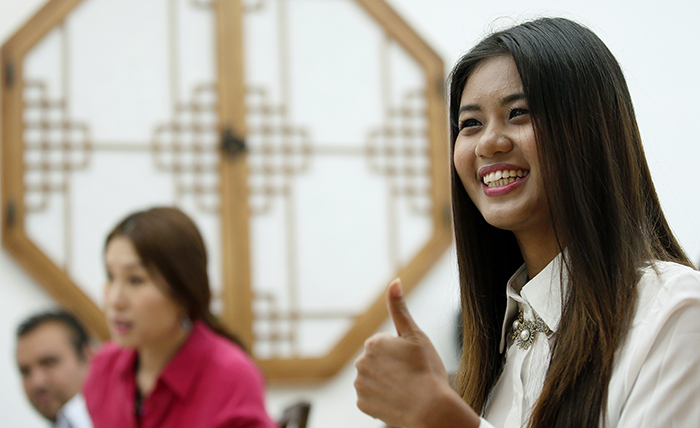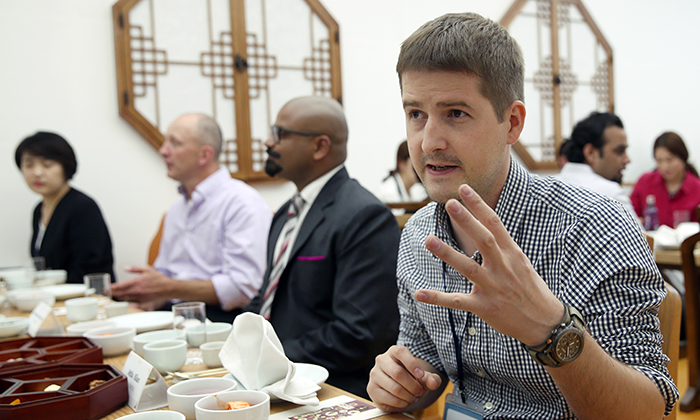Broadcasters from as far away as North America and even the Middle East arrive in Korea and travel to every nook and cranny across the nation, finding a variety of aspects about Korea to show their audiences back home.
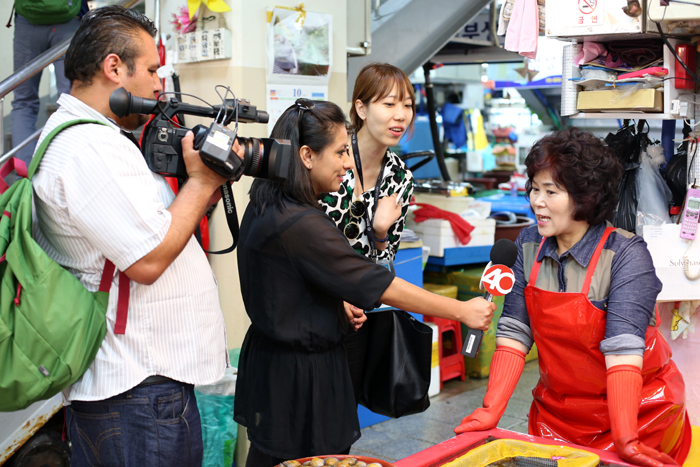
Mexican TV network Proyecto 40 reports from the Jagalchi Fish Market in Busan.
The Korean Culture and Information Service (KOCIS), part of the Ministry of Culture, Sports and Tourism, and publisher of Korea.net, is helping to meet this rising demand for news about Korea.
As part of these efforts, on September 28 KOCIS invited 18 journalists from seven countries to attend the "Invitation Program for the Documentary of Special Feature of Korea," a media focused tour that took the reporters to must-see sites across the country, where they could capture the “real Korea.” The invited broadcasters on the tour were Canada’s CTV, Mexico’s Proyecto 42, Hong Kong’s ATV, Greece’s Skai Media Group, India’s NDTV, Hungary’s MTVA and Myanmar’s MRTV-4.
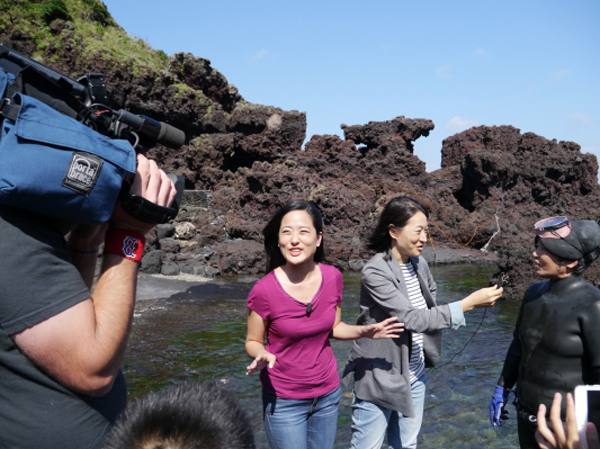
Canada’s CTV interviews one of the famous female divers, or haenyeo, of Jeju Island.
The broadcasting networks were taken to historical palaces from the Joseon Dynasty (1392-1910) located in the heart of Seoul, to the Garosu-gil and Hongdae neighborhoods, both youth-oriented shopping and partying districts, as well as to the Bukchon Hanok Village, a replica village of traditional Hanok houses.
The media outlets also travelled to other regions of the country, too, such as to Busan, where they covered the Busan International Film Festival that's in full swing there, to Muju, where they learned how to practice the traditional martial art taekwondo, and to Andong, which is home to one of the most valuable remainder's of Korea's past, the Hahoe Folk Village.
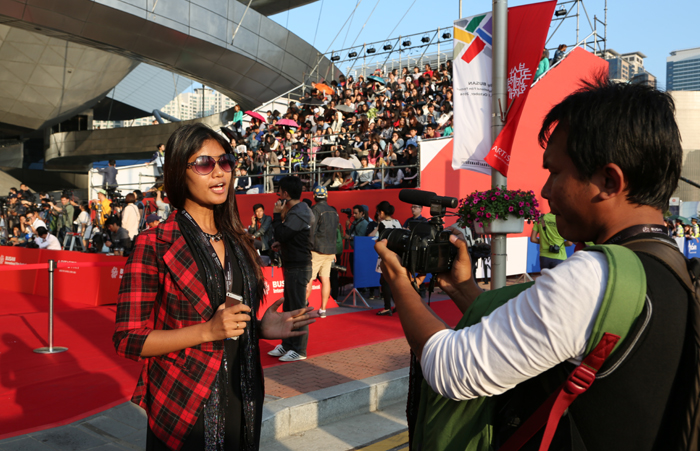
Myanmar’s MRTV-4 reports on the international film festival currently underway in Busan.
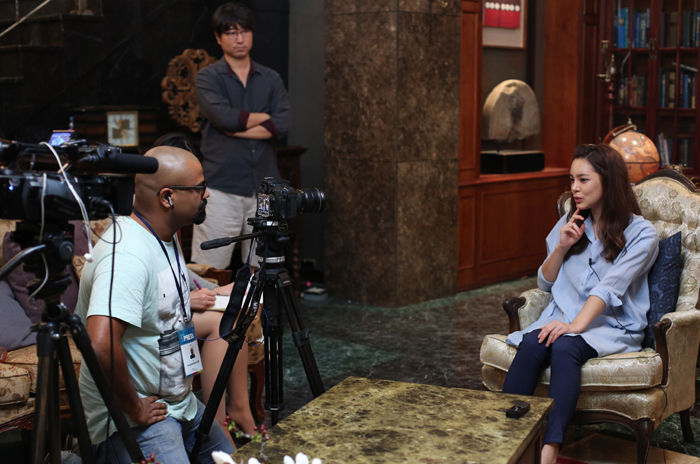
India’s NDTV interviews actress Park Si-yeon.
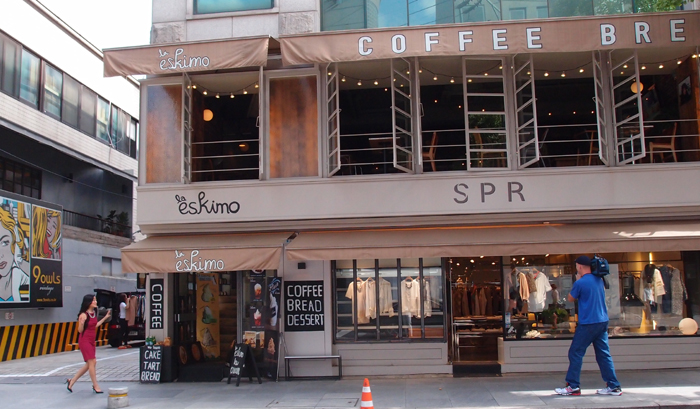
Canada’s CTV focuses its cameras on the popular shopping and fancy restaurant districts across Seoul, such as Garosu-gil.
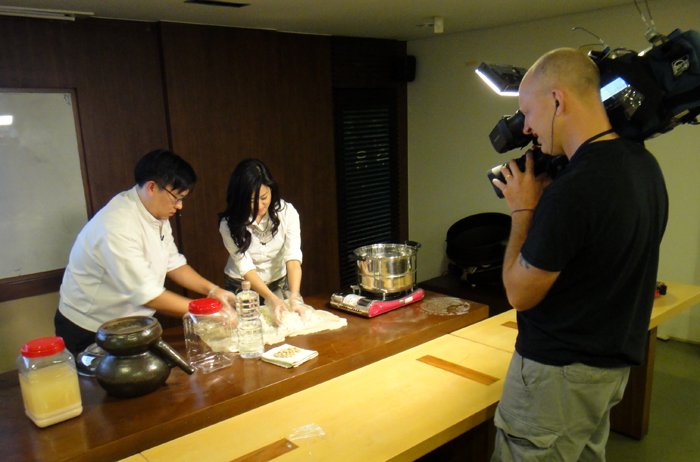
Canada’s CTV films the making of the distilled liquor gayang-ju.
The camera crews also had the chance to interview a group of pop stars, actors and actresses, as well as visit filming locations for some of the more famous soap operas and movies.
The international media outlets will stay until November 11 and cover more locations, including the demilitarized zone (DMZ), other shopping districts, Myeongdong and Dongdaemun, and the traditional Gwangjang Market, where they will sample some of Seoul's delicious street food.
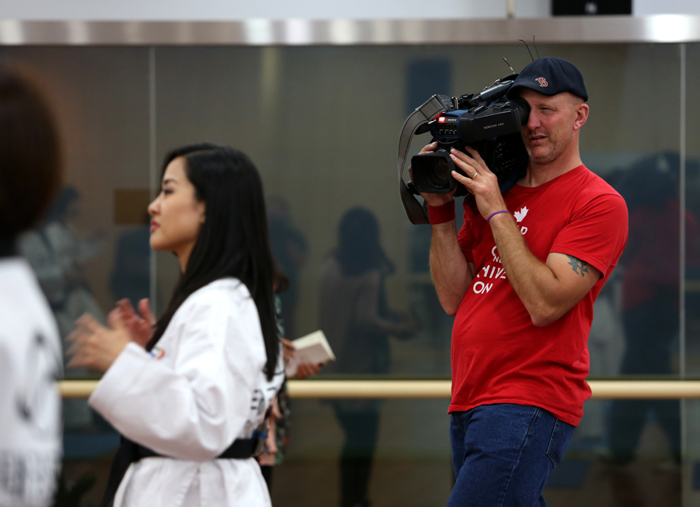
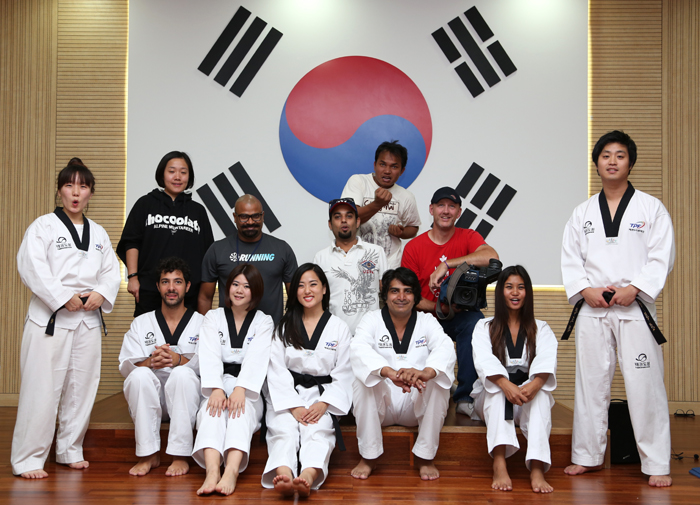
Journalists don the official uniform and practice the traditional martial art taekwondo.
“If you could report the things you’ve learned here to your audiences back home, based on your experiences in Korea, I am sure it will help improve the future-oriented relationship that exists between us,” said a KOCIS official on October 6.
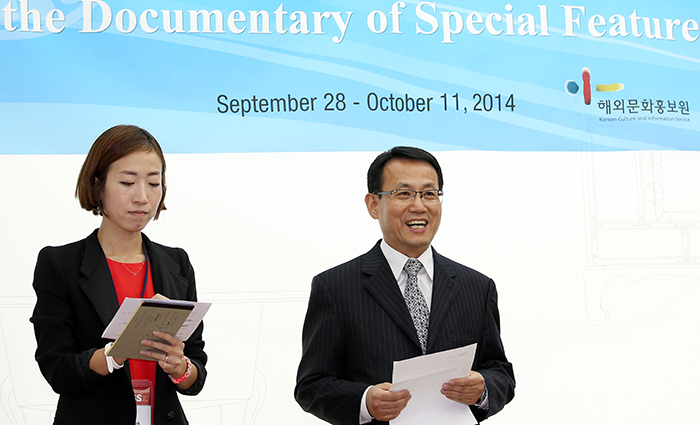
Kwon Yeong-sup, director of KOCIS' Foreign Media Relations Division, delivers his congratulatory remarks during a dinner for the journalists on October 6.
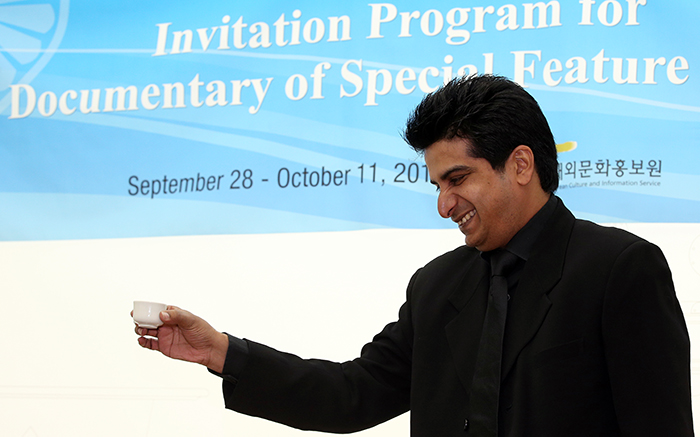
Adarsh Thottetodi, creative director at India’s NDTV, proposes a toast.
* Phyo May San, reporter at Myanmar’s MRTV-4
- Tell us about the way in which people in your country may or may not view "Korea." Does "Korea" have an image in your home country?
People in Myanmar are very familiar with Korea, actually. Thanks to, of course, our TV channel, Korean movies and soap operas are aired in the country. The people are also very familiar with Korean music, language and food, as well. There are so many Korean restaurants, too.
- You are in Seoul now. Are there any differences between the Korea you've seen on TV or in the movies and the Korea you see in front of you?
Not many differences, I guess. The buildings and the streets I see here are amazing, as I can see them in many Korean TV shows.
- What is it that has most impressed you about Seoul or Korea while you've been here?
When people meet each other here, they say, “Annyeonghaseyo,” and bow at the same time. I learned from the coordinators and guides who accompanied us throughout the program that just saying, “Annyeonghaseyo,” without bowing is not a proper greeting. So I have to bow and say that. That’s quite different from the way we greet people back home. I find it very interesting.
- If you had anything to say to Koreans or to Korean society in general, what would it be?
I am so excited to be in Korea. Working as a reporter for MRTV-4, we’ve been to so many countries, like Singapore, Thailand, Malaysia and so on. When I heard I was to go to Korea, I was so excited, because Korea is really familiar to me and to us. Korea is a great place. It’s really nice to be here.
* Attila Kilian, cameraman at Hungary’s MTVA
- Tell us about the way in which people in your country may or may not view "Korea." Does "Korea" have an image in your home country?
In my opinion, the people in my country know something about Korea nowadays. Most importantly, they now want to know more about Korea. Two years ago, a TV documentary was produced and aired. It was about Korean traditions and culture. It was quite popular and really helped people to understand more and to see more about the country in general.
- You are in Seoul now. Are there any differences between the Korea you've seen on TV or in the movies and the Korea you’ve seen through your camera here?
Unfortunately, we don’t see many things about Korea in Hungary these days. Maybe only a few pieces or TV programs here or there. They don’t know the “real picture” of Korea, which is more Asian, more modern -- I mean, technically -- than any other Asian county, as far as I can see here.
The documentary we are currently working on focuses on this journey and also on the schools and education system in Korea. That’s the focus we are trying to show: schools and the kids in uniform and their education.
- If you had anything to say to Koreans or to Korean society in general, what would it be?
I would just say, “Keep up with your happiness and with your kindness to guests." That’s all. I mean, that’s what I’ve felt here. The people here are really nice. They are happy and they’ve got really nice traditions. Generally, I would just say that. Just continue doing what you're doing. I’d also like to thank you for inviting me here. Just keep showing your amazing traditions to other countries.
By Sohn JiAe
Photos: Jeon Han
jiae5853@korea.kr
